Narthangai Pachadi is sweet, spicy, slightly bitter condiment from South of India. It is also known as narthangai pickle, citron pachadi which is popular in and around south of India. Narthangai pachadi is made with citron, onions. Spices, tamarind and jaggery. Learn how to make this delicious homemade citron pachadi easily at home with step wise pictures and video.

Narthangai pachadi
Narthangai pachadi is a dish served in all marriage banana leaf lunch in Nagercoil. Slightly bitter, tangy, sweet and spicy at the same time. Truly divine. It is relatively easy to make at home.
Table of Contents
About Narthangai pachadi
Narthangai pachadi is a popular condiments made using the citrus fruit called as the citron. This dish is popular in South of India, mainly Kanyakumari, Nagercoil. It is served in wedding/ marriage functions as a part of lunch.
This condiment is made using onion, green chilies, curry, leaves, citron, tamarind and jaggery. The pachadi itself is slightly sweet, bitter and spicy at the same time which goes well with curd rice, or plain rice.
This pachadi has a very long shelf life and it can be stored in fridge for 3 to 4 months. The same recipe can be made using orange, lemon or any citrus fruit. I have a similar recipe made using orange peel.
Similar recipes
Watch Narthangai Pachadi Video

Uses of Narthangai | Citron

Narthangai is also known as Citron. The fruit has a thick rind which is packed with full of citrus aroma.
Narthangai is a citrus fruit, with a rough outer covering. It is known as Citron in English. Unripe fruit is used to make the Narthangai Vathal or Pickle. In Southern part of India mainly Nagercoil, Kerala it is used to make this popular pachadi.
The skin of narthangai is peeled and used in making thogayal or chutney which imparts a wonderful citrus aroma to the dish. Narthangai leaf is used in cooking as well. It is one of the main ingredient in thai green curry paste. We use narthangai leaf when grinding this malli chutney or this thengai podi.
Narthangai Pachadi Ingredients
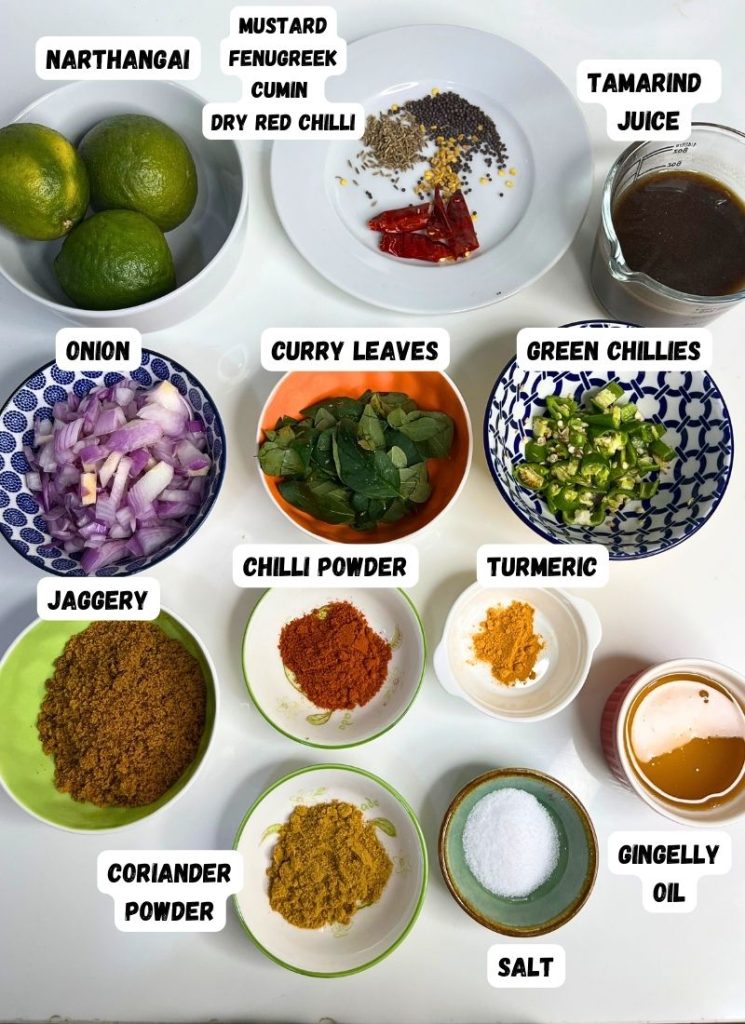
Narthangai - also known as citron. Try and pick green firm narthangai for this recipe. Young tender citron taste great. Make sure you remove the seeds when chopping else it will make the pachadi bitter.
Onions - you can use shallots instead of onions.
Green Chillies - add more or less green chillies to your taste. Make sure you chop them and add.
Tempering - spices like mustard, fenugreek, cumin, dry red chillies and curry leaves is added in oil. Amma told me not to use urad dal for tempering because it will make the pachadi spoil faster.
Tamarind - you can use homemade tamarind pulp mixed with water. Or you can soak a big lemon size tamarind in water and extract the pulp. You might need to taste and add more or less.
Jaggery - one of the most essential ingredients. Sometimes you might need to add more jaggery to balance the taste.
Gingelly Oil - Indian sesame oil is the preferred oil for its flavour.
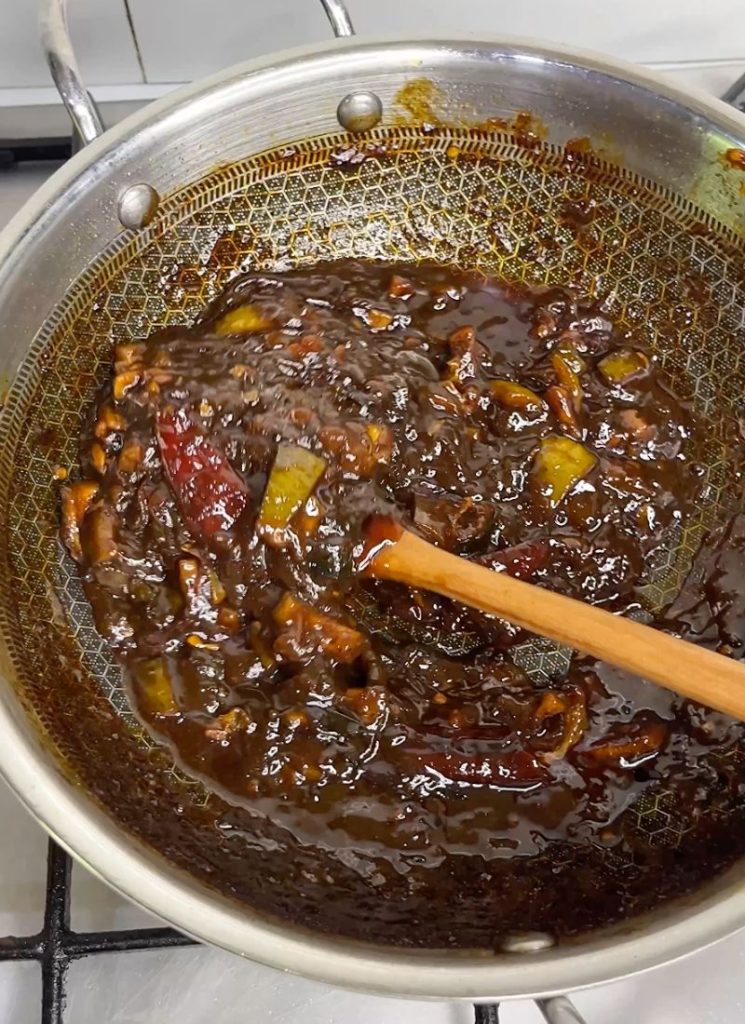
How to Make Narthangai Pachadi in Pressure Cooker (Easy Method)
- Heat oil in a pressure cooker. Add in the tempering spices and let them sizzle for 10 to 30 seconds.
- Add in onions, green chillies and sauté for 3 minutes. Add in turmeric powder and the chopped Narthangai and mix well. Sauté this on medium high heat for 10 minutes till the Narthangai starts to cook down and shrink.
- Now add in chilli powder, coriander powder, and mix well. Pour in tamarind juice and cover the pressure cooker. Pressure cook for 1 whistle, let the pressure release by itself, open the cooker and check whether the Narthangai is cooked completely. Once the citron is cooked. Add in salt and jaggery and mix well, cook this for another 5 to 10 mins until thickens. Once it gets thick, take it off the heat and allow it to cool completely.
- Store in an air tight glass jar in fridge and use as needed.
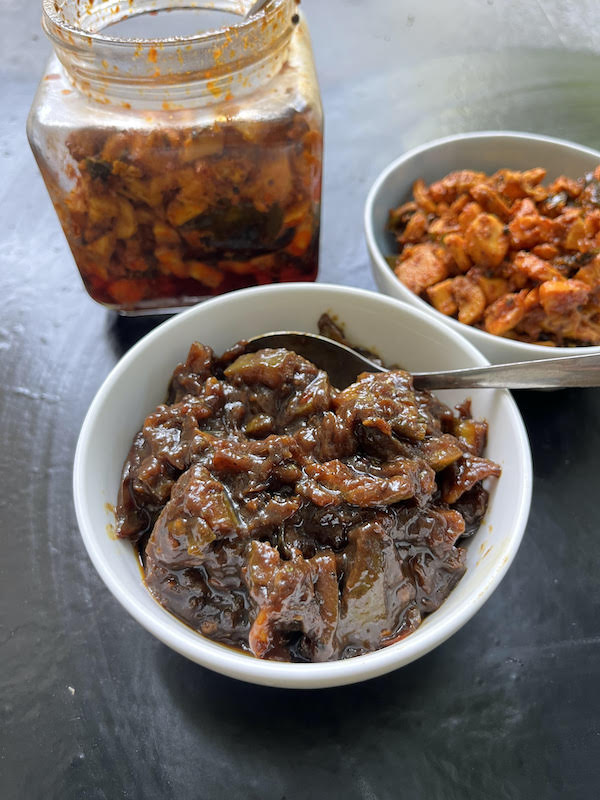
How to Make Narthangai Pachadi (Stepwise Pictures)
Chopping Narthangai
1)wash the fruit really well. Slice the stem and the bottom of the fruit using a sharp knife. Now cut them in half and chop them into small pieces. Remove the seeds and discard else it will make the pachadi bitter.
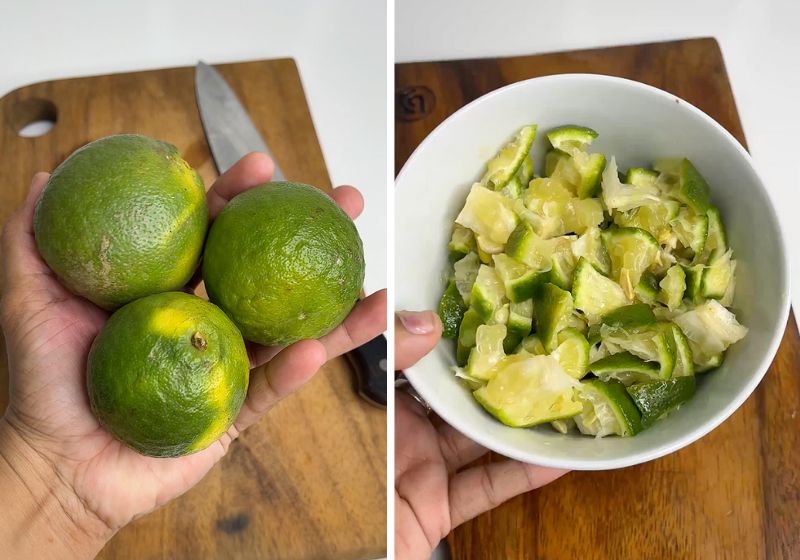
Tempering Spices
2)Heat oil in a Kadai. It is preferred to use gingelly oil also known as Indian sesame oil. Add in the tempering spices into the hot oil. I used mustard, cumin, dry red chilli, fenugreek seeds. Let them sizzle for 10 to 30 seconds.
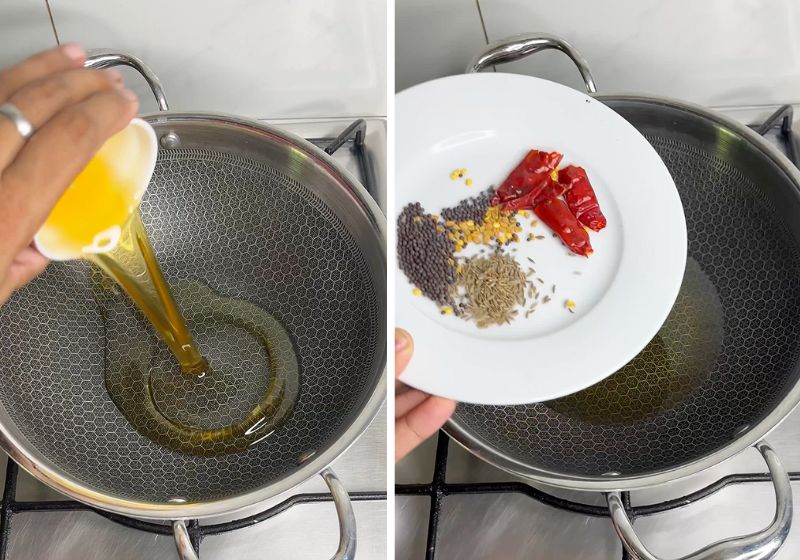
3)Once the spices are fried. Add in curry leaves and fry them for few seconds.
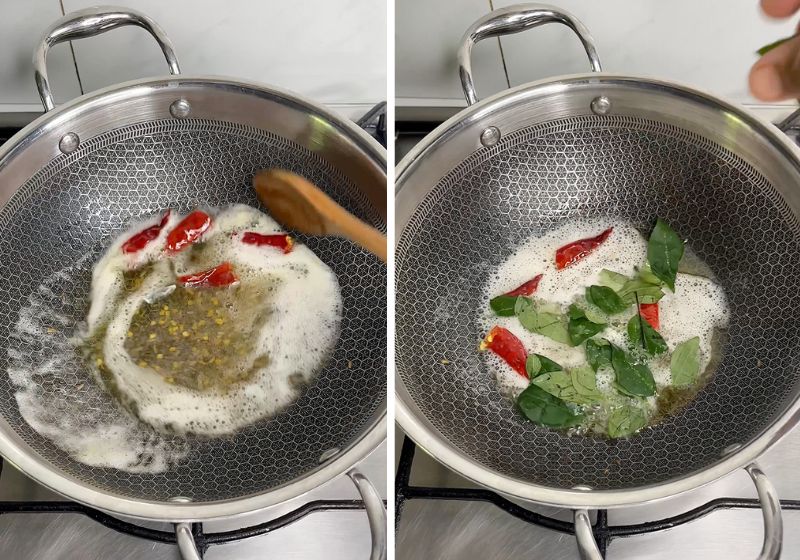
Cooking Narthangai
4)Add in chopped onions and green chillies. Instead of using large onions you can use peeled and chopped shallots when making pachadi.
The amount of green chillies also depends to taste. Add more or less as needed.
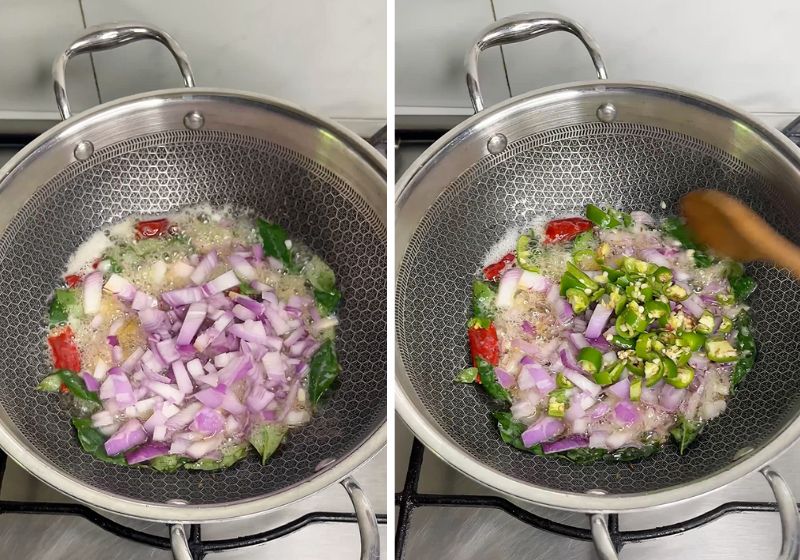
5)Add in turmeric powder and saute for few seconds. Now add in the chopped narthangai with all the juices collected.
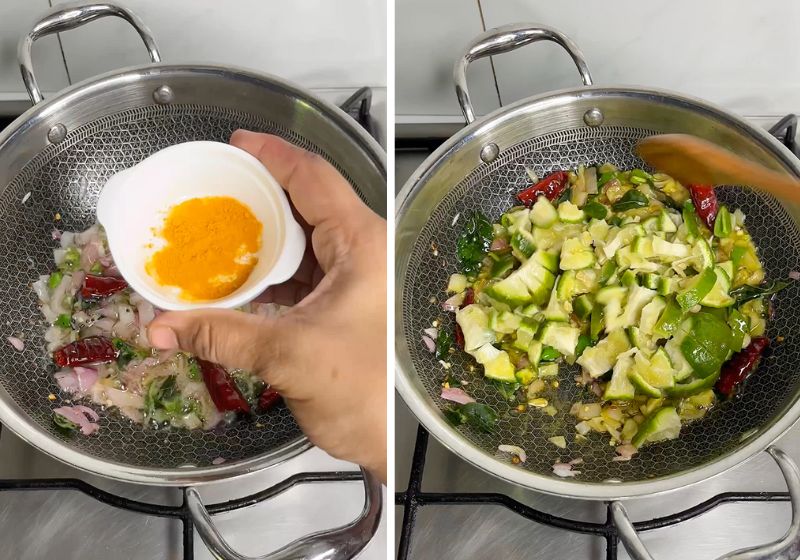
6)Now you are going to saute the narthangai for 5 minutes till it shrinks a little. Cover the pan with a lid and cook on low heat for 10 minutes.

7)open the lid in between and given a good mix. Cover again and cook until the narthangai is cooked completely.
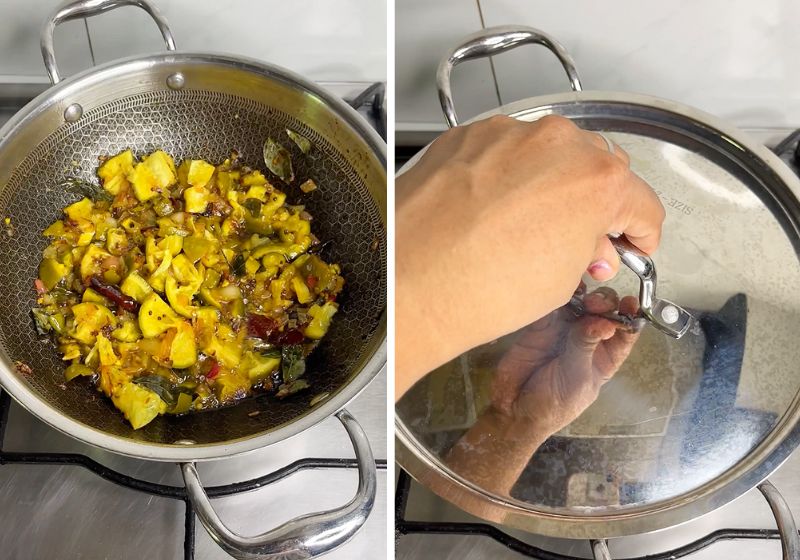
8)Now as you can see the citron | narthangai is cooked and has shrinked a lot.
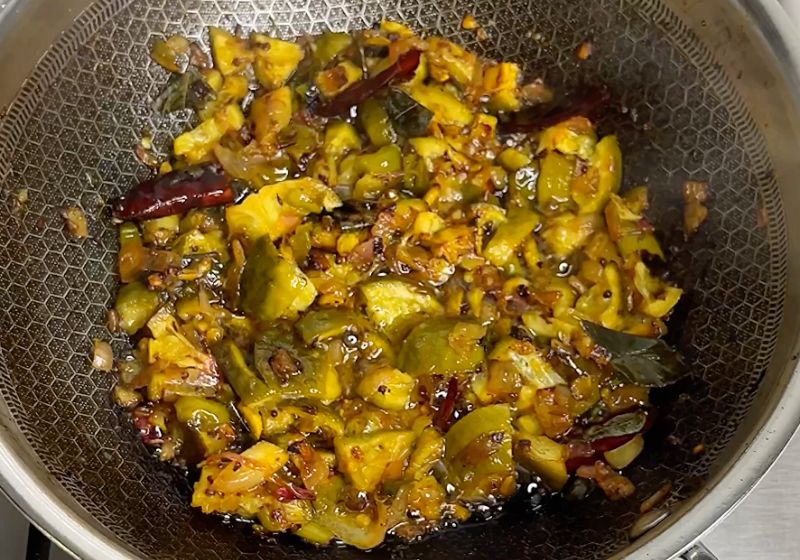
Adding in Spices
9)Add in kashmiri chilli powder or regular chilli powder and coriander powder. Instead of using this spices you can add sambar powder as well. Once the spices are added, mix it really well and cook for 1 to 2 minute till the raw smell leaves.
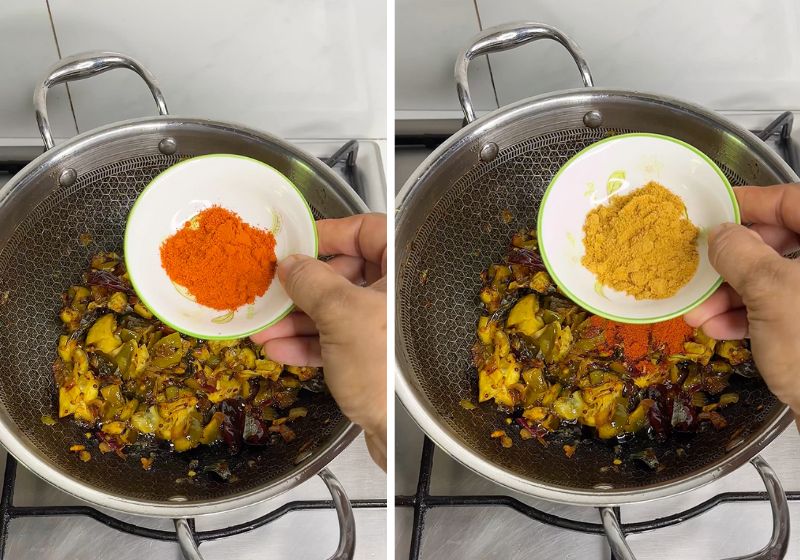
Making Narthangai pachadi
10)Add in tamarind water and more water. I used around 2 cups of water.
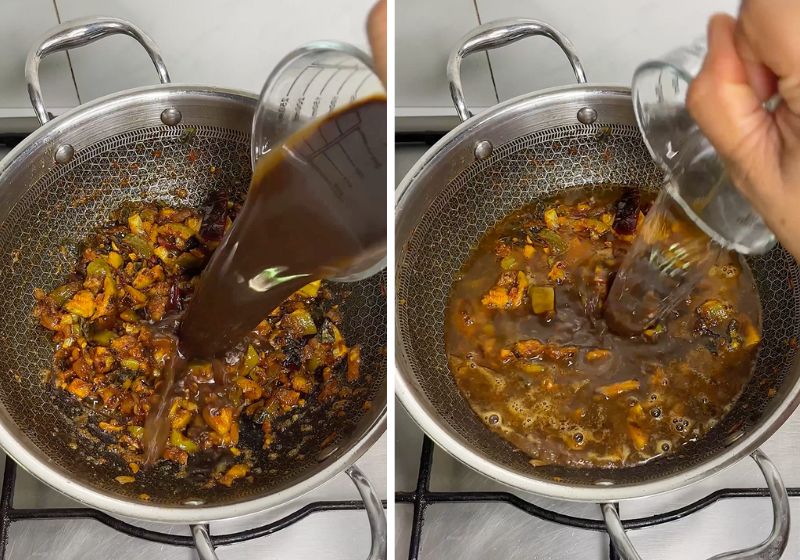
11)Bring this to a full boil. Cover the pan with a lid. Cook on low heat for 10 minutes till the narthangai is cooked completely.
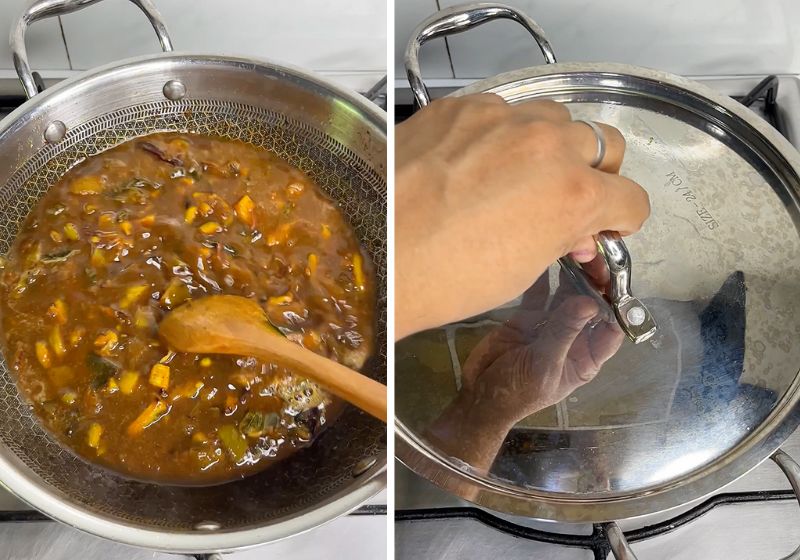
12)Once the narthangai is cooked completely. Add in salt and jaggery to the pachadi and mix well. At this point you have to taste and adjust tamarind, jaggery and salt level.
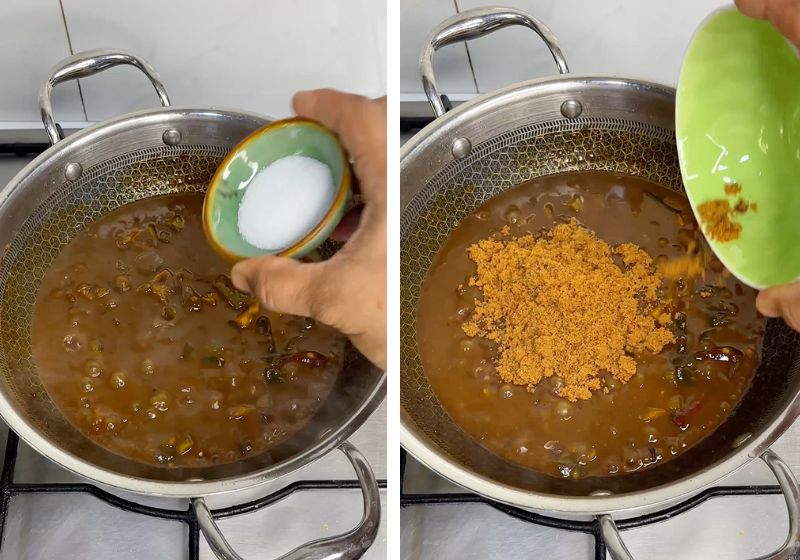
13)Cook the pachadi on low to medium heat till it thickens. Once the pachadi thickens, take it off the heat and allow it to cool completely.
Once cooled, store in a clean dry glass bottle. Serve.
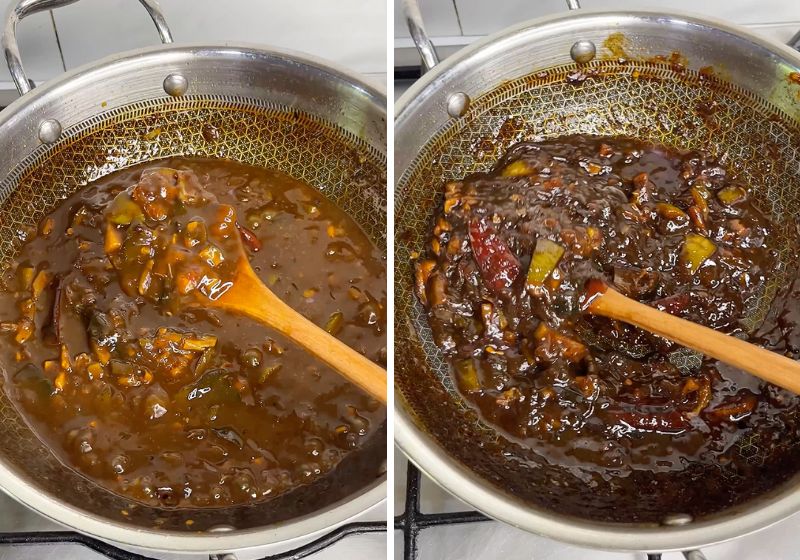
Expert Tips
- You can follow the same recipe and use orange, lemon or any citrus fruits.
- Taste and adjust jaggery and tamarind as per your taste.
- You can add more green chilies if you like your pachadi spicy.
- Gingelly oil is preferred in this recipe, but you can use any oil. Use good amount of oil because it preserves the Pachadi for longer time.
- Make sure you remove the seeds from the fruit, else it will make the pachadi bitter.
- Salt and jaggery is added only when the citron fruit is cooked completely in the end for texture.
- The whole dish can we cooked in a pressure cooker which will reduce the cooking time in half. Check recipe below.
More Pachadi Recipes to try
📖 Recipe Card
Narthangai Pachadi | Citron Pickle Recipe
Equipment
- Cooking pot
Ingredients
For Tempering
- ¼ cup Gingelly Oil (Indian Sesame Oil)
- 1 tsp Mustard seeds
- ½ tsp Fenugreek seeds
- 2 sprig Curry leaves
- 1 tsp Cumin Seeds
- 1 no Dry red chilli
For pachadi
- 2 large Narthangai | Citron remove seeds and cut into small pieces
- 1 large Onion chopped finely
- 3 no Green Chilli chopped finely
- 1 tsp Turmeric powder
- 1 tbsp Chilli powder
- 1 tbsp Coriander powder
- 4 tbsp Tamarind pulp
- 2 cups Water
- ½ cup jaggery or to taste
- Salt to taste
Instructions
- Wash and chop the Narthangai whole into tiny pieces. Discard the seeds as it might make the pachadi bitter. Take this in a bowl along with the citron juice, peel and flesh.
- Heat oil in a Kadai. Add in the tempering spices and let them sizzle for 10 to 30 seconds.Add in onions, green chillies and sauté for 3 to 5 minutes. Add in turmeric powder and the chopped Narthangai and mix well. Sauté this on medium high heat for 5 minutes till the Narthangai starts to cook down and shrink. Cover and cook until the fruit starts to soften. Make sure you stir in between. It will take 10 to 15 minutes till Narthangai is cooked.
- Now add in chilli powder, coriander powder, and mix well. Pour in tamarind juice and cook this covered for 10 mins till the Narthangai is cooked completely. Once the citron is cooked. Add in salt and jaggery and mix well, cook this for another 5 to 10 mins until thickens. Once it gets thick, take it off the heat and allow it to cool completely.
- Store in an air tight glass jar in fridge and use as needed.
Video

Notes
- You can follow the same recipe and use orange, lemon or any citrus fruits.
- Taste and adjust jaggery and tamarind as per your taste.
- You can add more green chilies if you like your pachadi spicy.
- Gingelly oil is preferred in this recipe, but you can use any oil. Use good amount of oil because it preserves the Pachadi for longer time.
- Make sure you remove the seeds from the fruit, else it will make the pachadi bitter.
- Salt and jaggery is added only when the citron fruit is cooked completely in the end for texture.
- The whole dish can we cooked in a pressure cooker which will reduce the cooking time in half. Check recipe below.
How to make Narthangai Pachadi in pressure cooker
- Heat oil in a pressure cooker. Add in the tempering spices and let them sizzle for 10 to 30 seconds.
- Add in onions, green chillies and sauté for 3 minutes. Add in turmeric powder and the chopped Narthangai and mix well. Sauté this on medium high heat for 10 minutes till the Narthangai starts to cook down and shrink.
- Now add in chilli powder, coriander powder, and mix well. Pour in tamarind juice and cover the pressure cooker. Pressure cook for 1 whistle, let the pressure release by itself, open the cooker and check whether the Narthangai is cooked completely. Once the citron is cooked. Add in salt and jaggery and mix well, cook this for another 5 to 10 mins until thickens. Once it gets thick, take it off the heat and allow it to cool completely.
- Store in an air tight glass jar in fridge and use as needed.
Nutrition
If you have any questions not covered in this post and if you need help, leave me a comment or mail me @[email protected] and I’ll help as soon as I can.
Follow me on Instagram, Facebook,Pinterest ,Youtube and Twitter for more Yummy Tummy inspiration.
IF YOU MAKE THIS RECIPE OR ANYTHING FROM YUMMY TUMMY, MAKE SURE TO POST IT AND TAG ME SO I CAN SEE ALL OF YOUR CREATIONS!! #YUMMYTUMMYAARTHI AND @YUMMYTUMMYAARTHI ON INSTAGRAM!


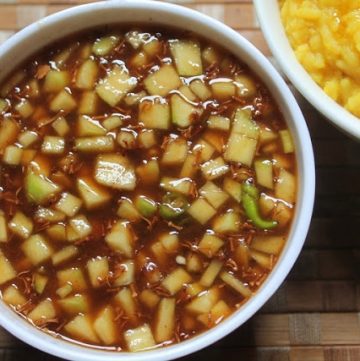
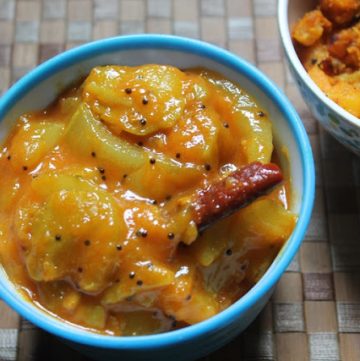
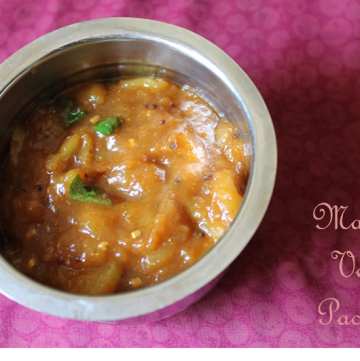
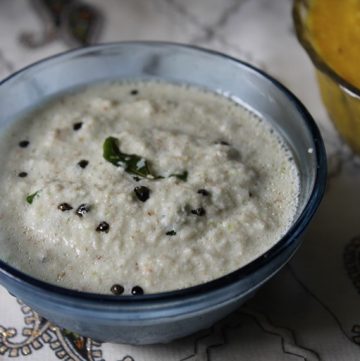



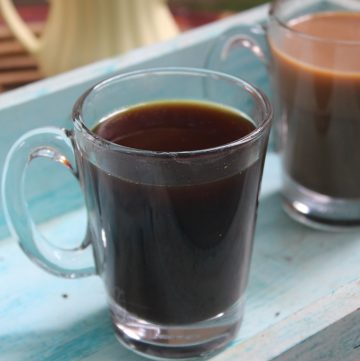
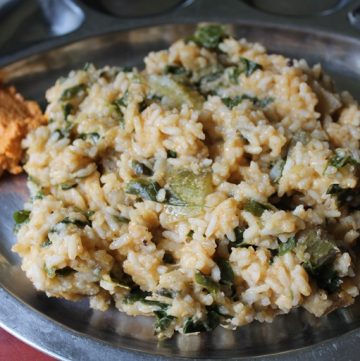

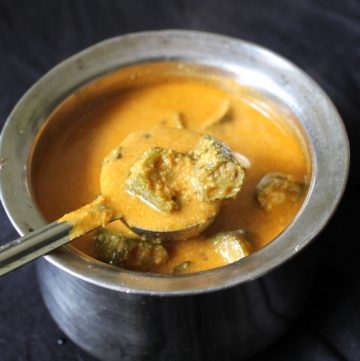

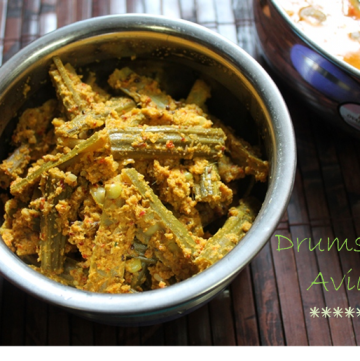
Leave a Reply